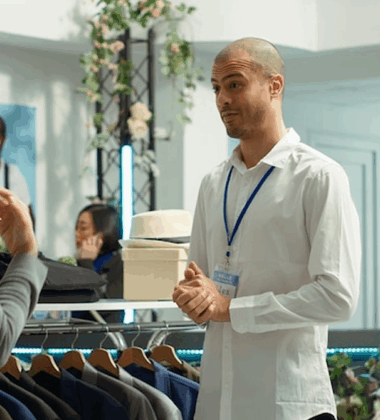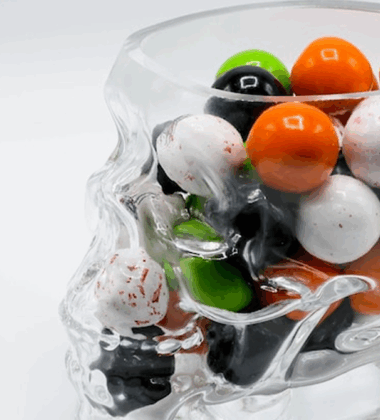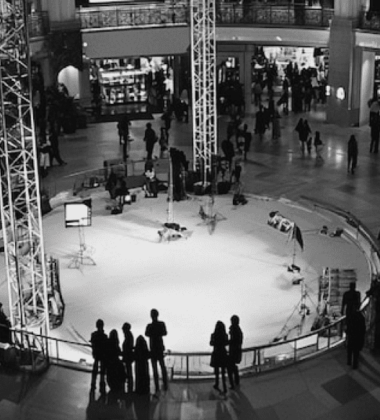The traditional product launch playbook is being rewritten. In a world where consumers crave experience as much as function, flavor is no longer just an attribute—it’s the narrative, the testing ground, and the medium for innovation.
Welcome to the era of taste innovation, where live R&D isn’t hidden in back labs but happens in public, immersive spaces. At the heart of this evolution? Flavor labs at expos, where food brands prototype the future, one bite at a time.
These aren’t your average sampling booths. They are cross-disciplinary studios of science, design, and culinary artistry—purpose-built to incubate bold flavor ideas in real-time, in front of an engaged and vocal audience.
Let’s explore how taste innovation is being redefined at expos like the Global Products Expo USA, June 26–28, 2025, and why these flavor-forward installations are fast becoming the new epicenter for product development.
The Shift: From Static Sampling to Dynamic Development
Food expos used to be about showcasing what was already finished—packaged, labeled, and shelf-ready. Today’s forward-looking brands see expos differently: not as an end point, but a launchpad for iteration.
Taste innovation booths turn passive tasters into active collaborators, making every nibble and comment part of a larger R&D strategy. These spaces invite attendees to test, tweak, and co-create new flavor profiles that might hit shelves six months—or six days—later.
Why? Because innovation that happens in a vacuum often misses the mark. Innovation that happens in front of real consumers? That lands.
What Is a Taste Innovation Lab?
At expos, a taste innovation lab is a hybrid activation space—equal parts culinary theater, research center, and brand experience. Inside, visitors might:
- Sample multiple formulations of a new beverage and vote on the best blend
- Participate in “flavor mapping” exercises tied to emotion or memory
- Customize snack ingredients to reflect health, taste, and mood preferences
- Observe chefs and food scientists developing recipes live on site
These aren’t gimmicks—they’re real-time flavor experiments that generate actionable insights.
Why Expos Are Ideal Incubators
Expos like Global Products Expo offer a unique convergence of the food ecosystem: industry insiders, scientists, chefs, trend forecasters, and end buyers all under one roof. That diversity is the perfect soil for innovation.
Here’s why:
1. Instant Multi-Audience Feedback
From CPG executives to Gen Z tasters, you receive cross-demographic feedback in hours, not months. You see what resonates broadly and what excites niche audiences.
2. High Engagement, High Stakes
Visitors arrive expecting to taste the future. Their attention is primed, their senses heightened. That intensity creates the right environment for memorable testing moments.
3. Iteration on the Fly
Because R&D teams are present, adjustments can be made live. Flavor too sour? Reduce acidity and re-sample. Texture off? Reformulate mid-show. You’re not just testing—you’re evolving in real time.
Key Features of Successful Taste Innovation Installations
Whether you’re designing a 10×10 booth or a full-scale flavor dome, here are essential elements that set top-tier taste innovation labs apart:
1. Sensory Customization Stations
Let attendees control aspects of taste: sweet/sour balance, spice level, or added functional ingredients. This empowers them and provides clear preference data.
2. Transparent R&D in Action
Feature chefs or flavorists preparing different versions of the same product live. Attendees can sample each and choose a favorite—turning your lab into a flavor voting booth.
3. Flavor Journey Mapping
Use visual prompts, memory triggers, or scent tunnels to show how your flavor connects to emotion, heritage, or location. This storytelling layer adds depth and recall.
4. Feedback Interfaces
Go beyond verbal surveys. Include sliders, emoji-based mood mapping, heat sensors, and interactive touchscreens. The goal: gather rich, structured input while making it fun.
Live R&D in Action: Examples from the Expo Floor
At the 2024 Global Products Expo, several brands turned their booths into live taste labs. Here are some standouts:
A. TasteX – AI-Powered Flavor Prototyping
This startup offered flavor mashups based on AI predictions of trending ingredients. Attendees could input mood, dietary needs, and meal occasion, and get a custom protein bar made on the spot.
Outcome: 73% of tasters preferred their AI-generated bar to the standard line. TasteX is now scaling this into a B2C app for snack customization.
B. Cultura – Ethnic Flavor Co-Creation
Cultura invited expo visitors to remix traditional sauces from 5 global regions using a base + modifiers format (spice, acidity, aromatics). Tastings were paired with cultural stories from local chefs.
Outcome: Identified 2 unexpected combinations that became hero products in their post-expo launch line. Also earned viral buzz on social media for honoring authenticity while inviting experimentation.
C. SipSense – Next-Gen Beverages with Biofeedback
Wristband wearables measured heart rate variability while tasters sampled calming teas, alertness shots, or mood-enhancing elixirs. Data was mapped to flavor feedback, revealing which blends delivered perceived and measurable effects.
Outcome: SipSense found that tart cherry + holy basil reduced stress markers more than their initial chamomile blend. Reformulation is now underway.
The Psychology Behind Flavor Engagement
What makes these taste innovation labs work so well? They engage not just the palate but the emotional and cognitive circuits of the brain.
- Personalization triggers ownership and memory
- Novelty activates dopamine (the curiosity reward system)
- Interactivity strengthens attention and recall
- Storytelling gives flavor meaning—and makes it sticky
In short, these booths turn food into a narrative, and tasters into co-authors.
Designing for Data: What You Should Be Tracking
Taste innovation is only as good as the insights you gather. Be sure to track:
- Flavor variant preferences by demographic
- Emotional descriptors associated with taste (e.g., “comforting,” “bold”)
- Heat maps of booth engagement
- Content shared (photos, comments, social posts)
- Time spent at each sampling zone
- Willingness to pay for each formulation
Use this data not just to refine your flavor—but to fine-tune your marketing message.
From Expo Floor to Product Shelf
A successful taste innovation activation doesn’t end when the event closes. Here’s how to turn those insights into real-world impact:
1. Prioritize Learnings Over Praise
Don’t just focus on what people liked. Pay attention to why they hesitated, what confused them, or what flavor profiles drew surprising interest.
2. Use Feedback to Shape Storytelling
If people consistently call your chili mango snack “nostalgic,” lean into that emotion in your brand positioning.
3. Identify Regional Variations
Expo attendees often come from across the country (or globe). Track patterns by location to uncover regional taste preferences.
4. Launch a Beta Rollout
Use your top-rated expo prototype for a limited drop in key markets or DTC channels. Frame it as “crowd-created at Global Products Expo 2025” for extra brand love.
Future Horizons: What’s Next for Taste Innovation at Expos?
Looking ahead, we expect taste innovation labs to become even more advanced and personalized. Likely developments include:
- Biometric scent matching (pairing samples to your olfactory profile)
- Holographic chefs guiding flavor customization in real time
- Digital flavor passports that log attendee tastings and flavor DNA
- Ingredient impact simulations (e.g., “add this spice and see your sodium score drop in real time”)
The fusion of technology, gastronomy, and psychology will only deepen—and expos will be the proving grounds for it all.
Final Course: A New Kind of Launchpad
In a crowded food landscape, flavor is one of the few differentiators that can’t be copied overnight. But the best flavor isn’t just discovered in a lab—it’s co-created, tested, refined, and emotionally validated.
That’s why taste innovation labs at expos are more than trendy activations. They are product incubators, emotional theaters, and strategic tools rolled into one. They’re where the next wave of food products will not only be tasted—but born.
So whether you’re a product developer, event designer, or marketer, your challenge is clear:
Don’t just sample. Prototype with purpose.
Don’t just gather feedback. Build from it.
And don’t wait until post-launch to learn—taste forward.





